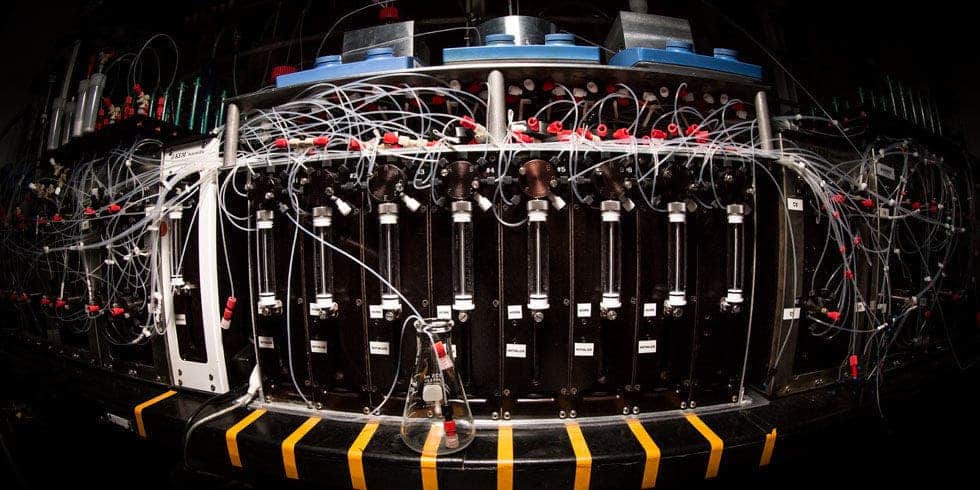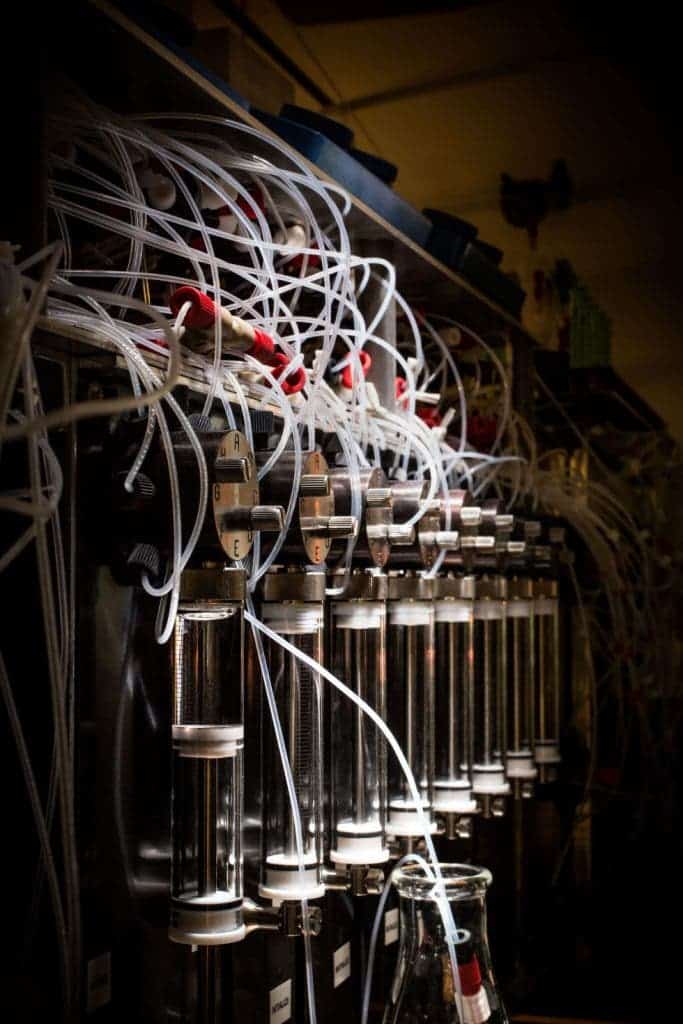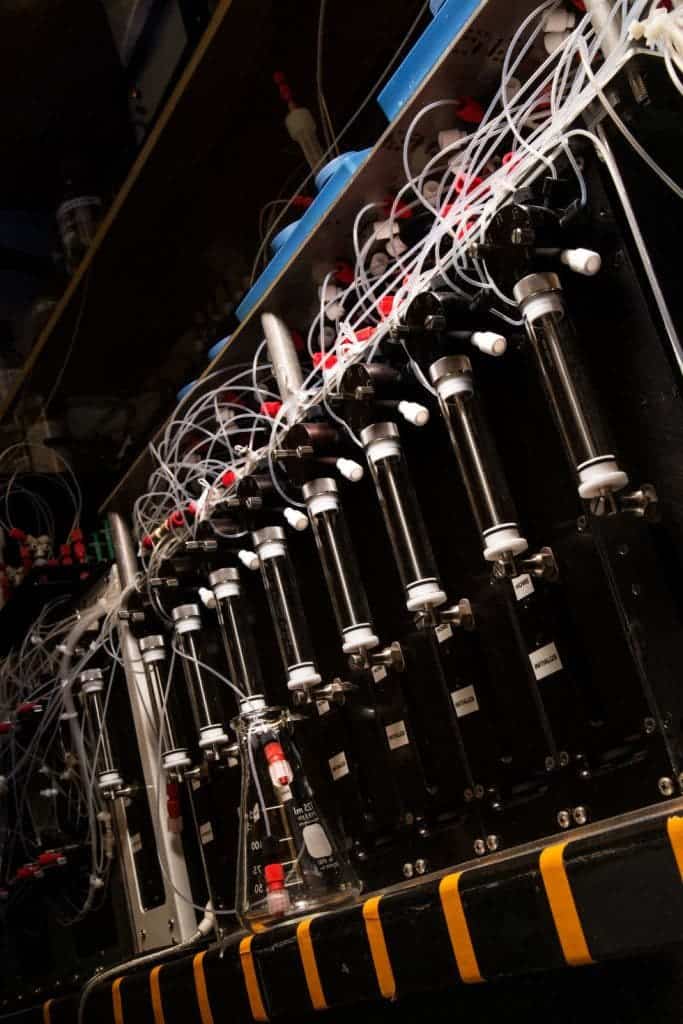At his lab at the University of Illinois at Urbana-Champaign, Dr. Martin Burke laid the foundation for what he simply calls “The Machine” – an automated small molecule synthesizer that’s set to change the way chemists assemble chemicals forever. It’s like a 3D printer, only for molecules. Starting with some basic chemicals, which Burke and colleagues separate into blocks, the machine assembles all sorts of molecules in a modular fashion, like pinning Lego bricks. Hours and hours of toiling in the lab might now be dedicated to more important business, and molecules yet to be synthesized can now be attempted. These small molecules hold tremendous potential in medicine, but technology is also sure to exploit the machine – anything from LEDs to solar cells.
The machine that builds molecules

Small molecules and polymers are common components in medicine, food, cosmetics, pesticides, narcotics and research reagents. They can also be found in the human body and in the environment.Small, chemically manufactured molecules (or SMOLs for short) are the classic active substances and still make up over 90 percent of the drugs on the market today. One example is acetylsalicylic acid (ASA), aspirin’s active ingredient with a molecular weight of about 180 g/mol. These small molecules can be processed into easily ingestible tablets or capsules. If the tablet dissolves in the gastrointestinal tract, the dissolved active substance is absorbed into the bloodstream via the intestinal wall. From there, the small molecules can reach almost any desired destination in the body because of their tiny size. Their small structure and chemical composition often also helps them to easily penetrate cell membranes.

At the same time, these small small molecules are also very difficult to synthesize. You need a lot of time, going from reaction to reaction which often can involve hundreds of steps and, usually, highly trained personnel is required. The Machine is different. It does all the dirty work for you, providing it has the process uploaded in its software, and almost anyone can do it – even chemistry neophytes.
“A lot of great medicines have not been discovered yet because of this synthesis bottleneck,” he says. With his new technology, Burke aims to change that. “The vision is that anybody could go to a website, pick the building blocks they want, instruct their assembly through the web, and the small molecules would get synthesized and shipped,” Burke says. “We’re not there yet, but we now have an actionable roadmap toward on-demand small-molecule synthesis for non-specialists.”
Nature is very good at building small molecules, but so far chemists’ efforts aimed at mimicking these processes have proven slow or, more often than not, impossible with current tech. Plants, animals, and microbes manufacture many small molecules with protein-like functions, and with some precise chemical modifications. The machine could assemble these sort of small molecules without the need for proteins.

First the machine breaks down very complex molecules into their basic chemical building blocks then induces a chemical reaction and washes away the reaction’s byproducts—slowly building each molecule from the ground up. Using this process the machine can utilize over 200 different building blocks along with thousands of other molecules to ‘print’ billions of different organic compounds, many of which make up 14 classes of small molecules, including the ratanhine molecule family.
“Doing real atomistic modifications to transform nature’s starting points into actual medicines is really, really challenging. The slow step in most cases in the synthesis. As a result, many natural products don’t get worked on in any practical way.”
“Nature makes most small molecules the same way,” Burke says. “There are a small number of building blocks that are coupled together over and over again, using the same kind of chemistry in an iterative fashion.” That means small molecules are inherently modular. So when Burke’s team analyzed the chemical structures of thousands of different natural products, patterns emerged. “There are building blocks that appear over and over again, and we’ve been able to dissect out the building blocks that are most common,” he says.
Burke has now founded a company called Revolution Medicines to further scale his project and receive funding. The company already is working to improve upon an anti-fungal compound known as Amphotericin B, which is found in nature and used to treat patients with life-threatening fungal infections. Check out this awesome interview with Dr. Burke below.
“Perhaps most exciting, this work has opened up an actionable road map to a general and automated way to make most small molecules,” stated Burke. “If that goal can be realized, it will help shift the bottleneck from synthesis to function and bring the power of making small molecules to nonspecialists….A 3D printer for molecules could allow us to harness all the creativity, innovation, and outside-the-box thinking that comes when non-experts start to use technology that used to only be in the hands of a select few.”
The molecules the Illinois team synthesized, as well as the machine itself, were described in a paper published in Science.


